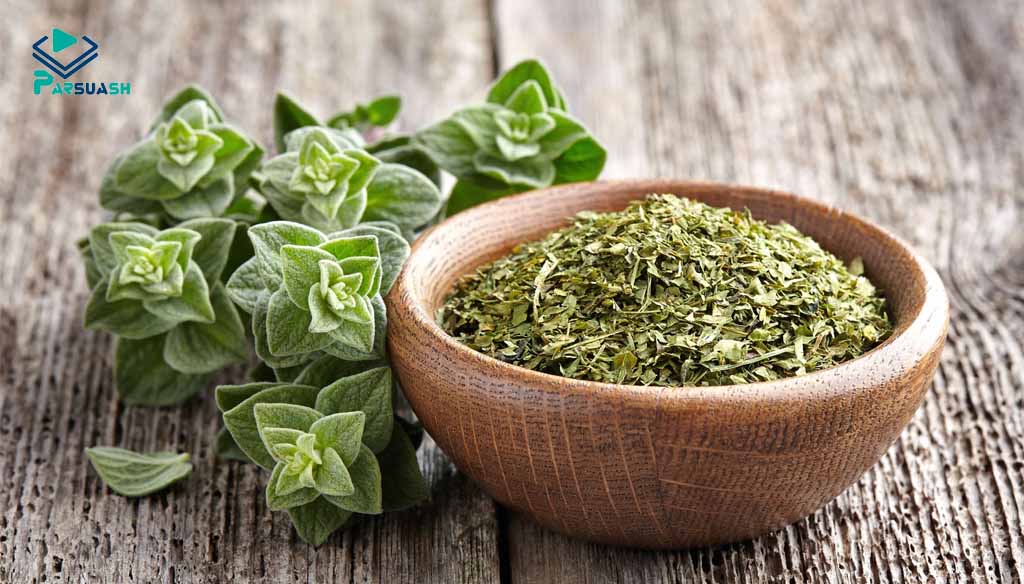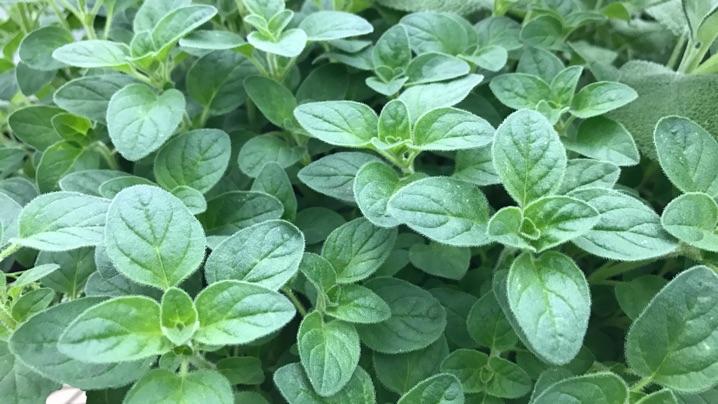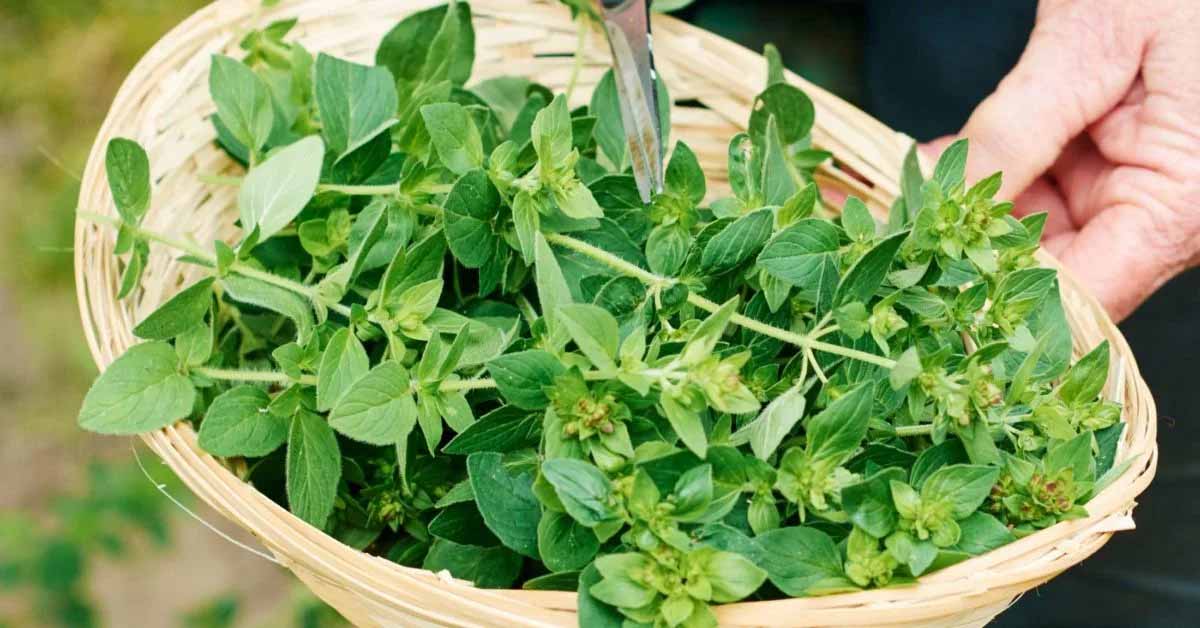
Table of Contents
Oregano is a culinary herb commonly used in Mediterranean and Mexican cuisine. It’s a perennial plant that belongs to the mint family and its scientific name is Origanum vulgare. Oregano has a pungent, slightly bitter taste and strong aroma and is often used to flavor tomato sauces, grilled meats, pizza and salads. Oregano is also considered a medicinal plant and is used in traditional medicine to treat a variety of ailments, including respiratory and digestive problems. Demand for organic oregano can vary by market and target audience. Overall, however, there is growing interest in organically and sustainably produced herbs and spices, which could create new opportunities for oregano producers who are able to meet this demand.
Oregano properties
Oregano has long been used in traditional medicine, and it is believed to have several medicinal properties. Some of the compounds found in oregano, such as carvacrol and thymol, have antimicrobial properties and may be effective against certain types of bacteria and fungi. Oregano is also used to treat respiratory conditions such as coughs, colds and bronchitis because it has expectorant properties that can help loosen mucus and relieve congestion.
In addition, due to its high content of phenolic compounds, oregano has antioxidant properties that can protect the body from free radical damage. Some studies also suggest that oregano has anti-inflammatory properties, which could make it useful for treating conditions such as arthritis.
It’s worth noting that while oregano is widely used in traditional medicine, more research is needed to fully understand its potential health benefits and to determine the most effective ways to use it for medicinal purposes.
Oregano HS code
If oregano is traded as a dried herb, the HS code is 0910.99.90. This code falls under Chapter 9 of the Harmonized System (HS) of tariff codes, which covers coffee, tea, mate, and spices.
If oregano is traded as an essential oil, the HS code is 3301.90.00. This code falls under Chapter 33 of the HS, which covers essential oils, perfumes, and cosmetics.
Some general uses for oregano
Oregano is a versatile herb used in many different cuisines around the world. Here are some common uses for oregano:
Seasoning for tomato-based dishes: oregano is a classic seasoning for tomato-based dishes such as pizza, pasta sauces, and tomato soups.
Marinades for grilled meats: Oregano is often used in marinades for grilled meats, such as chicken, beef and pork.Salad dressings: oregano can be used to enhance salad dressings, especially those made with vinegar or lemon juice.
Soups and stews: oregano is a popular seasoning for soups and stews, especially those made with beans or lentils.
Seasoning for roasted vegetables: oregano can be used to season roasted vegetables such as potatoes, carrots and zucchini.
Herbal tea: Oregano can be brewed into a tea and drunk for its potential health benefits, such as its expectorant properties.
.

Potential health benefits of oregano
Antimicrobial properties: oregano contains compounds such as carvacrol and thymol that have been shown to have antimicrobial properties. These compounds may help fight certain types of bacteria and fungi.
Antioxidant Properties: Oregano is rich in antioxidants, including phenolic compounds that can protect the body from free radical damage.
Anti-inflammatory properties: oregano may have anti-inflammatory properties, which could make it useful in treating conditions like arthritis.
Respiratory Health: Oregano is used in traditional medicine to treat respiratory conditions such as coughs, colds and bronchitis because it has expectorant properties that can help loosen mucus and relieve congestion.Digestive Health: oregano is used to treat digestive problems such as gas, bloating, and indigestion as it can stimulate the production of digestive juices and enzymes.
Potential anti-cancer properties: Some studies have suggested that oregano may have anti-cancer properties, although more research is needed to fully understand this potential benefit.
Cultivation of oregano
Oregano is a perennial herb that is native to the Mediterranean region, including Southern Europe, North Africa, and Western Asia. It is commonly found growing wild in dry, rocky soils in these regions. Oregano can also be cultivated in other parts of the world with similar growing conditions, such as in North America, South America, and Australia.
Oregano plants prefer full sun and well-drained soil, and they are generally easy to grow. They can be propagated from seeds or cuttings, and they can be grown in containers or in the ground. Oregano plants can also be grown indoors as long as they receive plenty of sunlight.
In its natural habitat, oregano is often found growing in rocky, mountainous areas and in areas with dry, hot summers and mild winters. It can tolerate drought and hot temperatures, but it may not survive in areas with very cold winters. In cultivation, oregano is often grown as an annual or a perennial, depending on the climate and growing conditions.
The types of oregano
There are several different varieties of oregano, each with its own unique flavor and aroma. Here are some of the most common types of oregano:
Greek oregano: Greek oregano, also known as Origanum vulgare subsp. hirtum, is a variety of oregano that is native to Greece and other Mediterranean countries. It has a strong, pungent flavor and is often used in Greek cuisine to season meats, vegetables, and sauces.
Italian oregano: Italian oregano, also known as Origanum vulgare subsp. viride, is a variety of oregano that is native to Italy and other Mediterranean countries. It has a milder, sweeter flavor than Greek oregano and is often used in Italian cuisine to season pizzas, pasta dishes, and tomato sauces.
Mexican oregano: Mexican oregano, also known as Lippia graveolens, is a variety of oregano that is native to Mexico and Central America. It has a citrusy, slightly bitter flavor and is often used in Mexican cuisine to season salsas, soups, and stews.
Syrian oregano: Syrian oregano, also known as Origanum syriacum, is a variety of oregano that is native to the Middle East. It has a strong, savory flavor and is often used in Middle Eastern cuisine to season meats, vegetables, and dips.
Spanish oregano: Spanish oregano, also known as Thymus capitatus, is a species of oregano native to Spain and other Mediterranean countries. It has a strong, spicy flavor and is often used in Spanish cooking to season meats, vegetables, and rice dishes.
.

Iranian oregano
Iranian oregano, also known as Origanum vulgare subsp. gracile, is a subspecies of oregano that is native to Iran, as well as parts of Turkey and the Caucasus region. It is a perennial herb that grows up to 60 centimeters tall and has small, oval-shaped leaves that are gray-green in color. The leaves of Iranian oregano have a strong, aromatic flavor and are commonly used in Iranian cuisine to season savory dishes such as stews, soups, and grilled meats.
Iranian oregano is known for its high concentration of essential oils, which give it its distinctive flavor and aroma. The essential oils of Iranian oregano contain compounds such as carvacrol, thymol, and p-cymene, which are believed to have antimicrobial, antioxidant, and anti-inflammatory properties.
Iranian oregano is also used in traditional medicine in Iran and other parts of the Middle East. It has been used to treat a variety of ailments, including digestive problems, respiratory conditions, and menstrual cramps.
.
Suggested article: Iran export potential: export of dried fruits
Oregano growing areas in Iran
In the temperate or tropical regions of Iran, the medicinal plant oregano usually grows in the form of a wagon at the edge of gardens, around springs and beside streams. In Iran, two types of oregano plants including mountain oregano and river oregano are better known than other species. This aromatic and medicinal plant is most widespread in the cities of Fars province (Darab, Jahrom, Fasa, Kazroon), in the southern cities of Kerman province (Jiroft, Manojan, Anbarabad), in Khuzestan province (Behbahan, Shush and Ramhormoz), in Kohkiloyeh and Boyer Ahmad provinces, in Ilam, Bushehr, Hormozgan, Sistan and Baluchistan, in Qazvin province, in Tehran and Semnan.
International trade of oregano in the world
Oregano is a widely traded herb, and its import and export regulations can vary depending on the country of origin and destination. In general, the import and export of oregano are subject to customs regulations, which may include requirements for documentation, inspection, and labeling.
When importing or exporting oregano, it’s important to comply with the customs regulations of both the importing and exporting countries. This may include obtaining permits or licenses, providing documentation such as certificates of origin and phytosanitary certificates, and complying with labeling requirements.
In addition to customs regulations, it’s also important to consider any restrictions or requirements related to food safety and quality. For example, some countries may have maximum residue limits for pesticides and other contaminants in oregano, which must be met in order to comply with food safety regulations.
The import and export regulations for oregano can vary between countries, and some countries may have particularly strict regulations for importing or exporting oregano. Here are a few examples:
European Union: The European Union has strict regulations for the import of oregano and other herbs, spices, and dried fruits and vegetables. These regulations include requirements for documentation, labeling, and inspection, and they are designed to ensure the safety and quality of imported products.
United States: The United States Department of Agriculture (USDA) regulates the import of oregano into the US. Oregano imports must comply with USDA phytosanitary requirements, which include inspection and treatment for pests and diseases.
Australia: Australia has strict regulations for the import of oregano and other herbs and spices. Oregano imports must comply with the Australian Department of Agriculture and Water Resources’ import conditions, which include requirements for documentation, inspection, and treatment for pests and diseases.
Japan: Japan has strict regulations for the import of oregano and other herbs and spices. Oregano imports must comply with the Japanese Ministry of Health, Labour and Welfare’s food safety standards, which include maximum residue limits for pesticides and other contaminants.
.

Oregano import in the world
The value of oregano imports varies from year to year and between countries. According to data from the United Nations Comtrade database, the total value of global oregano imports was approximately US$174 million in 2020.
The largest importers of oregano in the world are the United States, Germany, and the United Kingdom. Other major importers include France, Canada, Italy, Spain, and the Netherlands.
It’s worth noting that these figures represent the total value of oregano imports, which may include both dried oregano herb and oregano essential oil. The value of oregano imports can also vary depending on factors such as supply and demand, weather conditions, and exchange rates.
Oregano export in the world
The major exporters of oregano in the world are primarily located in the Mediterranean region, where the herb is native and widely cultivated. Here are some of the largest oregano exporters according to data from the United Nations Comtrade database:
Turkey: Turkey is the world’s largest exporter of oregano, accounting for approximately 40% of global oregano exports.
Greece: Greece is the second-largest exporter of oregano in the world, accounting for approximately 35% of global oregano exports.
Spain: Spain is a significant exporter of oregano, accounting for approximately 10% of global oregano exports.
Mexico: Mexico is a major exporter of oregano to the United States and other countries, accounting for approximately 5% of global oregano exports.
Egypt: Egypt is a significant exporter of oregano, particularly to Middle Eastern and North African countries, accounting for approximately 5% of global oregano exports.
Other countries that export significant amounts of oregano include Italy, Morocco, and Tunisia.
Forecasts for international trade of oregano
Growing demand for natural and organic products: There is a growing trend among consumers toward natural and organic products, which include herbs and spices such as oregano. This could create new opportunities for oregano producers who are able to meet the demand for high-quality, sustainably produced products.
Growing popularity of Mediterranean cuisine: Mediterranean cuisine, in which oregano is often a key ingredient, is becoming increasingly popular worldwide. This could increase demand for oregano in export markets.
Changes in trade policy: Changes in trade policy, including tariffs and other trade barriers, could affect demand for oregano in export markets. For example, ongoing trade tensions between the United States and some of its trading partners could create uncertainty for oregano exporters.
Climate change: Climate change could impact the supply and quality of oregano crops in some regions. Drought, extreme temperatures, and other weather events could lead to reduced yields and lower quality crops, which could impact the international trade of oregano.
Overall, the international trade of oregano is likely to continue to be influenced by a range of economic, environmental, and social factors. However, it’s worth noting that oregano is a popular and widely traded herb, and demand for high-quality oregano is likely to remain strong in a variety of markets.
.

The markets with high demand
There are several export markets where there is currently high demand for oregano. Here are some examples:
United States: The United States is one of the largest importers of oregano in the world, with strong demand for both dried oregano herb and oregano essential oil. Oregano is used in a variety of cuisines in the United States, including Italian, Mexican, and Mediterranean.
Germany: Germany is another major importer of oregano, with growing demand for organically and sustainably produced herbs and spices. German consumers are particularly interested in high-quality, natural products, which could open up new opportunities for oregano exporters who can meet this demand.
United Kingdom: The United Kingdom is also a major importer of oregano, especially for Italian cuisine. With the UK’s recent departure from the European Union, there may be opportunities for oregano exporters who are able to navigate the new trade regulations and supply chains.
Japan: Japan is a growing market for oregano, particularly for use in Japanese-style Italian cuisine. Japanese consumers are increasingly interested in natural and organic products, which could create opportunities for oregano exporters who are able to meet this demand.
Middle Eastern and North African countries: Oregano is a popular herb in Middle Eastern and North African cuisines, and there is a strong demand for high-quality oregano in these markets. Countries such as Egypt, Morocco, and Tunisia are significant producers and exporters of oregano to these regions.
